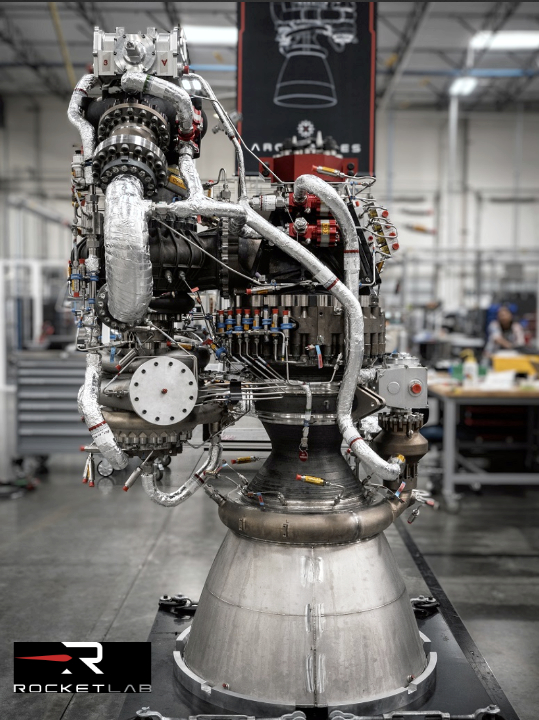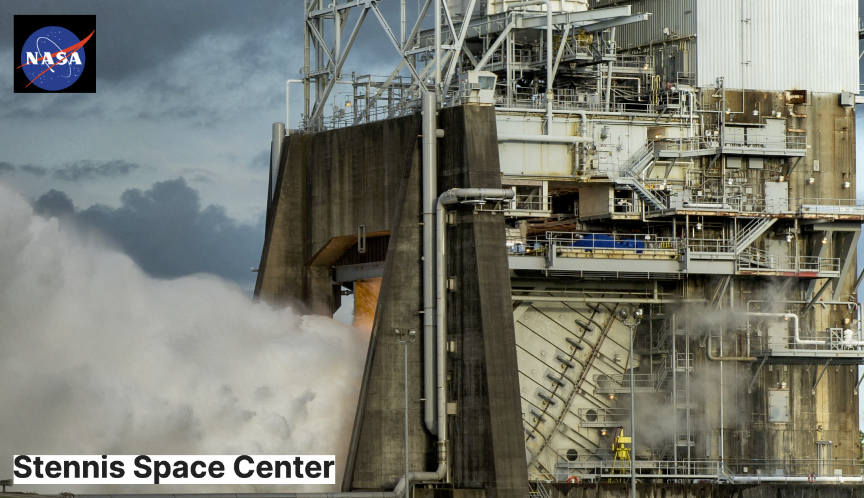
Rocket Lab USA, Inc. (Nasdaq: RKLB) has completed the first full assembly of the company’s Archimedes engine, the new 3D printed, reusable, rocket engine for the firm’s Neutron medium lift launch vehicle — Rocket Lab has now begun an intensive test campaign that will feature a number of engine system activations leading up to a first, Archimedes hot-fire.

The Archimedes test campaign will take place at Rocket Lab’s dedicated engine test stand at America’s largest rocket propulsion test site, NASA’s Stennis Space Center in Mississippi. As an oxidizer rich staged combustion cycle powered by liquid oxygen and methane, Archimedes is a unique rocket engine of its thrust class, engine cycle, and propellant combination.

The engine is designed for maximum reusability, with an operating point that allows the engine to operate at a lower stress levels comparative to other rocket engines on the market, and with a minimum reuse target of up to 20 launches per engine. At full power, each Archimedes engine is capable of producing 165,000 lbf (733 kilonewtons) for a combined total of 1,450,000 million lbf on Neutron’s first stage. Critical 3D printed parts to undergo testing include Archimedes’ turbo pump housings, pre-burner and main chamber components, valve housings, and engine structural components.
Many component, subsystem, and all-up system tests will be conducted throughout the test campaign. These tests will validate Archimedes’ transient start-up, steady-state, and shut down performance. The engine test and development campaign is a key driver of the schedule for Neutron’s first launch, which the Company today confirmed is now expected to take place no earlier than mid-2025.
Production of subsequent Archimedes engines is continuing in parallel with the ongoing test campaign, with long-lead 3D printed components already manufactured and undergoing checkouts and analysis ahead of integration and engine full assembly at Rocket Lab’s Engine Development Complex in Long Beach, California.
Additional recent milestones on the path to first Neutron launch include the completion of carbon composite flight structures for Neutron’s fairing panels, Stage 1 and Stage 2 tanks, and the reusable Stage 1 structure. Infrastructure development is also continuing at pace across Neutron’s dedicated launch site at Wallops Island, Virginia, with completed foundation concrete works for Neutron’s launch mount and propellant and gas storage facilities, and installation of the site’s 278 ft water tower.

“Having a completed Archimedes engine on the test stand is an inflection point in Neutron’s development program. Now we’ve entered the home stretch where we breathe fire and refine the engine in preparation for first flight,” said Rocket Lab founder and CEO, Peter Beck. “Often with engine development plans there can be a rush to get a minimum viable product to the stand, after which you have to spend years in redesign and iterative testing to get the performance you need, let alone being able to reproduce it reliably on a large production scale. What we’ve taken to the test stand is very close to a flight-like engine, and with all of our production infrastructure stood up alongside the engine’s development, we’re in a prime position to be able to make quick iterations to Archimedes for a rapid development and qualification campaign. We took the time to not only bring a mature design to the stand that has been thoroughly tested at component level, but to also stand up the experienced team, manufacturing line, and test facilities required to support long term production of Archimedes. This approach has ultimately pushed the first flight to mid-2025 at the earliest, but it’s an approach we believe will deliver the frequent flight rates the market needs quickly after flight one. Designing a brand-new rocket engine to meet the market demand for frequent and reliable launch is complex feat, but it’s something we’ve successfully done before, having launched more than 470 Rutherford engines to space. We look forward to repeating this success with Archimedes.”
About the Archimedes engine
Archimedes is the 3D printed, reusable rocket engine designed and manufactured by Rocket Lab to power the Company’s new Neutron rocket. Capable of lifting up to 13,000kg, Archimedes is an oxygen-rich staged combustion engine powered by liquid oxygen and methane that is designed for rapid reusability. Neutron will include nine Archimedes engines on its reusable first stage for a total combined thrust of 1,450,000 lbf. The single vacuum-optimized version of Archimedes on Neutron’s second stage shares all major components with the first stage engine and is capable of up to 202,300 lbf (900kN). Both versions of Archimedes are designed for multiple restarts, with the vacuum Archimedes designed to start up to six times while in space to perform complex orbital maneuvers for payload delivery in multiple orbits or more complex orbits.
